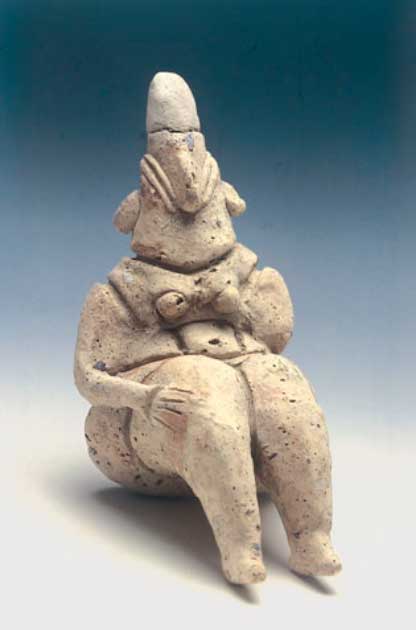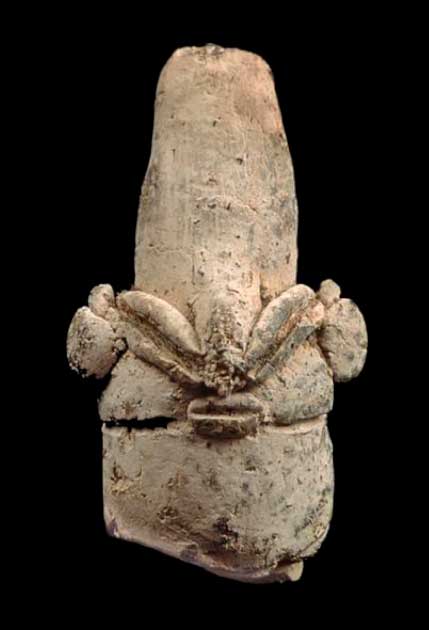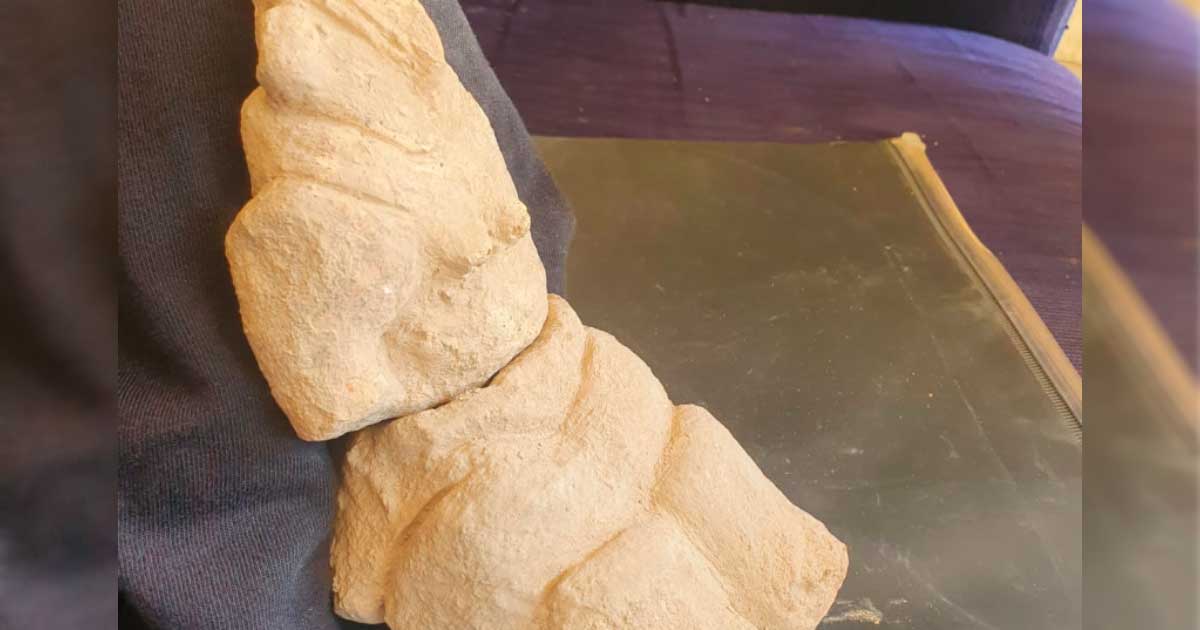8,000-Year-Old Yarmukian Mother Goddess Unearthed
An 8,000-year-old "Mother Goddess" figurine has been uncovered at a Neolithic site in Israel. Why then, does she have “coffee-shaped” eyes?
Located at the foot of the Golan Heights in the Jordan Valley area of north-eastern Israel, the Sha'ar HaGolan kibbutz archaeological site is situated less than 1 km (2/3 of a mile) from the border with Jordan. It was here that archaeologists recently unearthed the broken 20-centimeter (7.87 inch) long figurine.
Dating back 8,000 years, this 'Mother Goddess' figurine was created by the Yarmukian culture. While Israeli archaeologists are describing the goddess as having “coffee-bean” shaped eyes, she has nothing to do with coffee. In fact, coffee can be traced to the mid-15th century in Yemen. So what then does this ancient mistress of the Levantine otherworld represent?
Red Is The Color Of Love, And Sex
The Neolithic Yarmukian culture of the ancient Levant is regarded as the first culture in prehistoric Israel. This attribution is given because Yarmukians were the first people in Levant to make clay pottery. And, similarly to later Neolithic groups in Ireland and Scotland, Yarmukian ceramics feature lozenge, herringbone and linear diagonal lines and patterns.
- New Type of Homo Species in Levant Changes Human History Forever
- Did Ancient Humans Acquire Nautical Knowledge by Sailing the Prehistoric Megalakes of Africa?

Part of the extensive Sha'ar HaGolan excavation area. (Yosef Garfinkel / CC BY-SA -3.0)
Judea district archaeologist Anna Eirikh-Rose from Israeli Antiquity Authority serves as co-director of the dig at Sha'ar HaGolan kibbutz and she told J-Post the 20-centimeter goddess figurine was excavated next to the wall of a house covered with “a red bottomed bracelet.” Depending on agricultural success and the fertilization of people and animals for sustained survival, Yarmukians worshipped a “Mother Goddess” and red, like in most ancient cultures, represented fertility and all things sexual/reproductive.
The Largest Mother Goddess Ever Discovered In Israel
The Museum of Yarmukian Culture at the kibbutz archaeological site exhibits all of the artifacts recovered from this vast 20-hectare Neolithic excavation zone. The site was first excavated in 1949, and again in 2004. At these previous excavations researchers identified planned streets, courtyards and houses, as well as smaller mother goddess figurines with incised pebble faces, and further so-called “eye figurines.”
- Scientists Track Silver Trade From Trojan War to Roman Republic
- Sea-Farers from the Levant the first to set foot in the Americas: proto-Sinaitic inscriptions found along the coast of Uruguay

Shaar Hagolan Mother Goddess clay figurine previously found at the site. (CC BY SA 3.0)
The dig’s current co-director, Dr. Julien Vieugue, describes the newly excavated goddess figurine as “a large, seated woman with big hips, a unique pointed hat and what is known as ‘coffee-bean’ eyes and a big nose.” She has one hand on her hip and the other is under her breast. Vieugue said the artifact represents one of the “largest examples'' of the goddess figurine ever found from the Yarmukian culture.”
A Cult Fertility Icon, Or A Recognized State Goddess
While many similar Yarmukian sites have been identified in the Levant, by a long shot, Sha’ar Hagolan is the largest and the most probable center of Yarmukian culture. Eirikh-Rose says that 8,000 years ago the inhabitants of Sha’ar Hagolan began mass-producing pottery. Now, it’s the primary goal of the archaeologists to better understand the “origin and mechanism of development of the pottery production” at the site.
Eirikh-Rose said the figurine was created by wrapping and layering clay around a central cylindrical core. The archaeologist added that it was anything but easy to make. The artifact is currently undergoing residue analysis which will eventually reveal what type of clay was used to make the goddess idol. Ultimately the researchers aim to find out if this particular Mother Goddess was a cultic icon, or a deity from an already established religion.

A close up of the head of one of the Yarmukian figures, showing the ‘coffee bean eyes’ shape. (Yosef Garfinkel, CC BY-SA 3.0)
Returning To Those Problematic “Coffee-Bean” Shaped Eyes
We should finish this piece with a return to the figurine’s so-called “coffee-bean” shaped eyes. One could perhaps better understand this “coffee-bean” reference to the symbolism of the figurine had it been discovered at a medieval Yemen site, or in 17th century South America where the Mother Goddess was worshipped as “Pachamama” - the World-Mother and controller of fertility.
For the sake of clarity, Israeli archaeologists should perhaps change the name “coffee” to what the eyes actually represent. They should be called “wheat or barley-shaped eyes,” for these two details represent the unplanted wheat or barley kernel, and the promise of new life tomorrow.
Top image: 8,000-year-old Mother Goddess figurine excavated at Sha’ar HaGolan, Israel Source: Anna Eirikh-Rose / Jerusalem Post
By Ashley Cowie




















Comments
I think these figurines are beautiful. Not only in appearance but also for what they represent. Full figured women in the ancient past were a sign of health and wealth. Probably also strength but that's a guess on my part. If the ancient peoples were to see what is regarded as the beauty standard in the modern day, I'm sure they'd find it less than appealing. Again, I'm only speculating. What I won't do is impose my personal bias and disrespect another culture by degrading their beliefs and religious artifacts. I wonder if the "coffee bean eyes" was just a way for them to recognize this as special. Unlike a typical figurine..
But why are they so ugly?
Nobody gets paid to tell the truth.